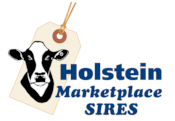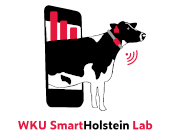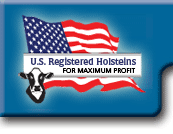












|
- Who We Are
- Association Governance
- What We Do
- Our History
- State Associations


|


|

 |
Holstein Association USA provides programs, products and services to dairy producers to enhance genetics and improve profitability — including animal identification and ear tags, genomic testing, mating programs, dairy records processing, classification, communication, consulting services, and Holstein semen. |

 |
Holstein Association USA is the largest dairy breed organization in the world. |

 |
The Association headquarters are located in Brattleboro, Vermont, where they have been since 1903. |



|
There are over 20,000 members who have a strong interest in breeding, raising and milking Registered Holstein® cattle.
The Association processes over 370,000 registrations and 70,000 transfers each year. On an average day, 1,400 registrations are received and processed. |
| |
|
Since its formation, the Holstein Association has been dedicated to the development of the Holstein breed. Today, Holstein cattle dominate the U.S. dairy industry due to unexcelled production, greater income over feed costs, unequaled genetic merit and their adaptability to a wide range of environmental conditions.
Holstein Association USA maintains the records for all ancestry, identity, ownership and performance information on more than 22 million Registered Holstein cattle that is contained in Association files.
The Association is in the business of providing information to dairy producers, members and nonmembers. This data is translated into information used by producers in making profitable business decisions.
Producers who use Association programs and services find they can make accurate breeding and management decisions, set goals for their herd, evaluate management practices, determine market value of breeding stock, and predict performance and profitability of animals not yet born.
|

Association members are part of a democratic system in which members select delegates among themselves who will represent them in voting for resolutions, by-law amendments, board of directors, and the Association's Vice President and President at the National Convention. In turn, delegates consider members' opinions and concerns when voting on bylaws and policies at the National Convention and when electing a president, vice president and board
of directors. The board of directors determines governance and association policy.
The day-to-day business of the Association is handled by the Executive Secretary and staff. The Association team works out of the home office in Brattleboro, Vermont, the Agri-Tech Analytics office in Visalia, California, and the Holstein Marketplace Sires office in Fort Atkinson, Wisconsin. Additionally, 30 representatives in the field
throughout the country provide on-farm assistance and services to dairy producers.
|
The Association works with members at the grass-roots level to exchange information, ideas, and news about Holstein Association USA. Staff members and directors routinely attend state meetings, barn meetings, and county and local field days. These events give members, delegates, and directors the opportunity to discuss and learn more about critical issues before voting action is taken at the National Convention.
Beyond this, Holstein Association USA keeps members up to date with a variety of communication channels, such as new releases, YouTube videos, The Pulse (the Association’s quarterly publication), and more. The Association shares the story of Registered Holstein breeders with consumers and producers alike through Holstein America, a documentary-style TV series.
|
 
Association members have provided direction and set policies for the national organization for more than 130 years. They are part of a democratic system in which members select delegates among themselves, who will represent them in voting. |
Holstein Association USA, Inc.
Constitution & Bylaws

|
| |
|
 |
|
Front row, left to right: Barbara Casna, Chief Financial Officer/Treasurer; John M. Meyer, previous Chief Executive Officer/Executive Secretary; Dwight Rokey, Vice President; John Burket, President; Spencer Hackett, R. Joshua Wright, Elizabeth Bullard.
Back row, left to right: Tony Brey, Paul Haskins, Robert Webb, Jeff King, Scott Yocum, Andy Lenkaitis, Dean W. Jackson,
Alfred Brandt, Not pictured: Bill Genasci.
|
|
|
|

President
John Burket
East Freedom, PA
|

Vice President
Dwight Rokey
Sabetha, KS
|
CEO/Executive Secretary
Lindsey Worden
Brattleboro, VT
|
CFO/Treasurer
Barbara Casna
Brattleboro, VT
|
|
|
Region 7
Alfred Brandt
Linn, MO
|
At-Large
Tony Brey
Sturgeon Bay, WI
|
Region 1
Elizabeth Bullard
Turner, ME
|
Region 9
Bill Genasci
Modesto, CA
|
Region 6
Spencer Hackett
Rice, MN
|
Region 3
Paul Haskins
Butler, OH
|
Region 2
Dean W. Jackson
Columbia Cross Roads, PA
|
At-Large
Jeff King
Schuylerville, NY
|
At-Large
Andy Lenkaitis
Saint Charles, IL
|
Region 5
Robert Webb
Plymouth, WI
|
Region 8
R. Joshua Wright
Jerome, ID
|
Region 4
Scott Yocum
Salvisa, KY
|
Holstein Association USA has maintained and has been the steward of Holstein cattle records since 1885. Genealogical records and information collecting and analyzing production, type, and genetic data provide useable information that enables dairy producers to improve their businesses by breeding better cows. The Holstein Association works to help dairy producers recognize the full potential of their herds.
We recognize that no two dairy operations are the same, and with the wide range of products and services, strive to meet the needs of all dairy producers. Dairy producers can choose from a number of different identification methods to register their herds, from Tag ID and EASYTM, a computer software program, to the traditional paper applications with sketches. TriStarSM, the Holstein Association's production records program, offers three levels of service to both ensure the integrity of production records and to fit dairy producers' management needs. The Association's Type Classification program offers a wide array of program options to fit every dairy producer's situation.
|


 |
The most valuable product the Holstein Association provides to dairy producers is genetic information. We understand that in order to be valuable this genetic information must not only meet the highest standards of verification, but also be presented in a way that dairy producers can easily use. Therefore, information is provided in a number of formats. Official Holstein Pedigrees™ are offered both on hard copy and over the Internet.
Sire information can be obtained through the Sire Summaries - a report of the results of the genetic evaluations including Total Performance Index® (TPI®) and Linear Type Evaluation information, over the Internet as well as through the computer software program Red Book Plus/ MultiMate™. The Association provides rankings of bulls and cows to allow breeders to locate the best genetics to use in their breeding programs.
The Holstein Association offers all of this along with the assistance of a well trained, professional staff both in the field and at its headquarters in Brattleboro, VT. Nineteen Regional Sales Representatives and 19 Classifiers represent the Association in the field. These dairy experts help dairy producers utilize Association programs to improve their herds and increase their bottom lines. In Brattleboro, 100 staff members work diligently to develop and maintain the Association's programs and serve customers. |
| |

 Holstein Association USA is the largest breed organization in the world, comprised of members who have a strong interest in breeding, raising and milking Holstein cattle.
Holstein Association USA is the largest breed organization in the world, comprised of members who have a strong interest in breeding, raising and milking Holstein cattle.
The Association staff maintains the parentage, production and ownership records of Holstein animals. In extensive data files, we have maintained records and ancestry that trace back to the original 8,800 Holstein animals that were imported to the U.S. from the Netherlands during the period of 1852-1905.
The 284 dairymen who signed the founding charter of the organization wanted to preserve and disseminate useful information and facts about the Holstein pedigree. They strove to identify desirable qualities and distinguishing characteristics of the best of the Holstein breed, and to promote and communicate these to other dairymen to help increase their business success.
Holstein-Friesian cattle originated in Europe over 2,000 years ago and were the result of the mating of black animals of the Batavian tribe and white animals of the Friesian tribe.
| The first Holsteins were imported to America. These bloodlines were lost due to crossbreeding. |
In the 1850's a breeder from Massachusetts, Winthrop Chenery, made his first purchase of Holstein cattle from the captain of a Dutch sailing vessel. He was so impressed with the breed, that he imported seven more Holstein animals. After losing these animals to illness, Chenery made his historical importation of one bull and four cows in 1861. These animals were destined to spread the fame of the Holstein breed across the country. Soon, other dairymen were importing the Holstein breed into the United States.
Another notable breeder was Gerrit Miller of Peterboro, N.Y., whose importations in the 1860's and 1870's and his subsequent breeding of these animals laid the foundation for many of the early Holstein herds. |
 |
| Winthrop Chenery |
|
| In the 1870's, there was enough interest among breeders in the United States to form organizations for recording pedigrees and maintaining an official herdbook. The first herd book was published in 1872 by the Association of Breeders of Thoroughbred Holstein Cattle and contained the pedigrees of 128 Holstein animals. |
| In 1885, the Association of Breeders of Thoroughbred Holstein Cattle and the Dutch Friesian Association of America merged to form the Holstein-Friesian Association of America. |
| The first Holstein-Friesian Association office was in Iowa City, Iowa, the home of the first Secretary, Thomas B. Wales from 1885 to 1894. |
 |
| Thomas B. Wales |
|
In 1894, F.L. Houghton, the second Holstein-Friesian Secretary, set-up office at his home farm in Putney, Vermont. |
 |
| F.L. Houghton |
|
|
| By 1903, the registry work had increased so much that Houghton decided to rent office space in Brattleboro and hire three clerks. |
| In 1917, business was booming and more office space needed, so A.B. Clapp, a Holstein breeder, was commissioned to build a brick building on the southern edge of Brattleboro, Vermont. This building remains the home of the Association today. |
 |
| In 1994, the Holstein-Friesian Association officially changed its name to Holstein Association USA, Inc. |
 |
| To reflect changes in the industry and to increase appeal in Registered Holstein® cattle, Holstein Association USA unveiled a new logo and slogan - "U.S. Registered Holsteins- For Maximum Profit." |
Today there are over 20,000 adult members and 8,000 junior members. Adult membership is paid annually and junior membership is a one-time $20 dollar fee and is valid until 21 years of age. Our members are people who have an interest in owning, breeding and raising Registered Holsteins®.
The Holstein Association USA employs over 140 people in the office and the field. All of the staff are well-trained professionals and knowledgeable about the Holstein breed and Association services. |
|



































